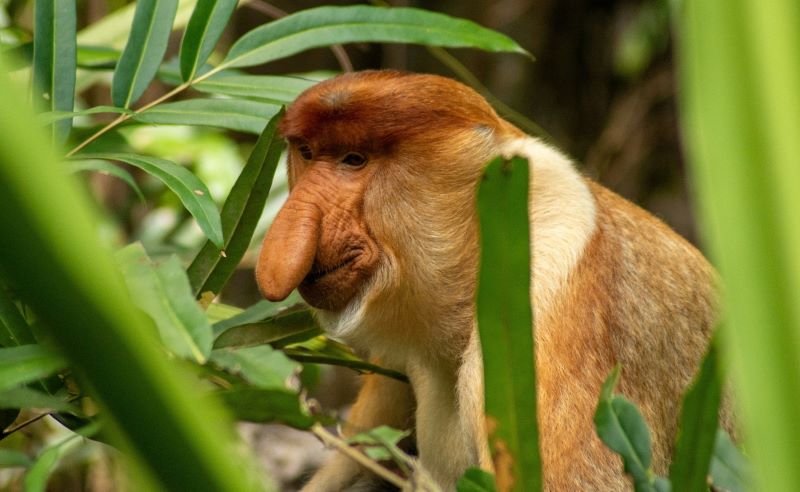Forget trying to establish what dark matter is, Canberra academics have answered the all-important question – does size matter – and it appears the male obsession is justified. When it comes to the animal kingdom, bigger is better – at least for proboscis monkeys, famously known for their long, large and droopy noses.
In a world first, researchers from the Australian National University (ANU) have explained why male proboscis monkeys have larger and “enhanced” nasal structures.
The researchers examined the bony nasal cavity inside the skulls of proboscis monkeys and found their large noses (“distinguished” is probably more politically correct) have several major benefits, especially when it comes to attracting potential female partners.
Endemic to Borneo, proboscis monkeys have unfortunately been branded one of the world’s ugliest animals (a face only a mother could love) thanks to their large and unusual looking noses.
Lead author Dr Katharine Balolia and former ANU masters student Pippa Fitzgerald used 3D scans of proboscis monkeys’ skulls to take size and shape measurements of the primates’ bony nasal cavity. They found the shape of the nasal cavity of male proboscis monkeys evolved to allow them to emit louder and deeper calls such as “honks and nasal roars” (perhaps not unlike a V8 Summernats mating call).
“We wanted to understand why male proboscis monkeys’ noses are so big, and whether their nasal cavities have a distinctive shape,” Dr Balolia said. “We found that males have much bigger nasal cavities than female monkeys, and their nasal cavities also have a different shape compared to females.
“Being able to emit louder and deeper calls thanks to a longer and larger nasal cavity helps male monkeys to assert their health and dominance. This helps the male monkeys attract females and ward off other males.
“The more females a male can attract, the more it allows him to father more offspring. So having a large nose and being able to more easily emit honks and nasal roars due to a uniquely shaped nasal cavity really helps males show off their quality and status to prospective female partners.”
Dr Balolia said the jungle-like environment in which these endangered primates live could explain why their noses evolved to become so big.
“Proboscis monkeys live in coastal mangroves and forested environments, and often can’t see each other through the trees. So loud, nasalised calls are important to communicate with each other, especially amongst males,” she said.
“The fleshy nose tissue likely got bigger over time as it enhanced their ability to let out nasal honks and roars. Proboscis monkeys rigidly straighten their noses when giving these calls.
“Females may have then started to find large noses visually attractive for selecting a mate as it was an honest signal of health and dominance.”
The researchers also found the bony nasal cavity opening of male proboscis monkeys gets bigger with age, which is consistent with older males having larger noses. Again, not unlike older homo sapiens today).
“This coincides with when they achieve dominance status among other male monkeys, allowing them to scare off other males and attract a lot of females who are ready to breed,” Dr Balolia said.



